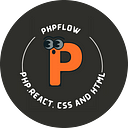Step-by-Step Guide for Integrating Gmail Functionality in PHP — Phpflow.com
In this PHP Gmail API tutorial, We’ll look at how to integrate Google’s Gmail API’s to your PHP applications. You may access and control emails, labels, draughts, and many other capabilities via the Gmail API, which offers a rich range of functionalities.
By the end of this tutorial, You’ll have the knowledge and code samples to interact with Gmail using PHP and unlock a range of possibilities for your applications.
I have already shared Send Email From Localhost Using SMTP and PHP.
- Set up the Gmail API:
- Enable the Gmail API in the Google Developers Console.
- Create OAuth 2.0 client credentials and set up the necessary scopes.
- Configure the project and obtain the required credentials.
- Install the required dependencies:
- Authenticate and authorize:
- Set up the authentication flow to obtain an access token for the Gmail API.
- Implement the OAuth 2.0 authorization process and obtain the necessary permissions to send emails.
- Construct the email:
- Create a new
Messageobject and set the required email headers such as sender, recipient, subject, and other optional headers. - Set the email content as plain text or HTML, depending on your needs.
- Send the email:
- Use the Gmail API’s
users.messages.sendmethod or the equivalent method in your chosen programming language's library to send the email. - Pass the constructed
Messageobject as a parameter to the send method.
What’s Difference between SMTP and Gmail APIs
An established protocol for transmitting emails is called SMTP (Simple Mail Transfer Protocol). By establishing a connection with an SMTP server and entering the required data, including the sender, recipient, topic, message, and attachments, it enables you to send emails. SMTP is a straightforward and widely used technique for sending emails, however, it focuses primarily on sending functions and lacks advanced features like email management, editing draughts, and accessing extensive message metadata.
On the other hand, the Gmail API offers a rich collection of functions made especially for incorporating Gmail functionality into applications. It enables sophisticated email management, including access to and editing of message content, labels, draughts, and attachments. In comparison to SMTP, the Gmail API provides more control, flexibility, and automation possibilities, making it appropriate for apps.
Setting Up the Gmail API
Let’s set up the Gmail API in the Google Developers Console. We’ll create a new project and enable the Gmail API, and obtain the necessary credentials.
Here, I’ll let you know the step-by-step process to configure Gmail API with your apps, including creating OAuth 2.0 client credentials, setting up the required scopes, and configuring the project.
Sponsored Links
- Go to Google Developers Console
- Choose “Select a project”, it’ll open a new modal box and enter hare Name and hit the “Create” button.
Sponsored Links
Sponsored Links
Installing the Google API PHP Client Library
The Google API PHP Client Library is going to be installed. This library offers easy-to-use classes and methods for interacting with Google APIs, including the Gmail API. We’ll go through installation and list any prerequisites that are required.
Prerequisites:
- php must be installed in your system
- install composer into your system
Let’s install Gmail API libs using composer.
composer require google/apiclient:"^2.0"
Authenticating with the Gmail API
In order to provide our PHP programme permission to use a user’s account to access the Gmail API, we will build the authentication flow. We’ll go through how to get access and refresh tokens and how to store them safely as part of the OAuth 2.0 authorization process.
To grant access to your Gmail account from your PHP app, you will need to create a file within your current working directory:
Directory: gmail/quickstart/ Code sample Run with: php quickstart.phpYou’ll be asked to login in to your Google account or choose one account to authorise when you run the above code. Code sample for PHP is available in this GitHub directory.
Sending Emails with the Gmail API
I will now implement email sending with PHP. We’ll walk you through creating and sending emails, including choosing the recipients, the subject, the body, and any attachments.
We can send to the recipient using commands messages.send or draft.send.
function sendMessage($service, $userId, $message) { try { $message = $service->users_messages->send($userId, $message); print 'Message with ID: ' . $message->getId() . ' sent mail.'; return $message; } catch (Exception $e) { print 'An error occurred: ' . $e->getMessage(); } return null; }The full source code:
function sendMessage() { // Instantiate the Gmail API client $client = new Google_Client(); $client->setAuthConfig('path/to/credentials.json'); $client->addScope(Google_Service_Gmail::GMAIL_SEND); // Authenticate and authorize $accessToken = getAccessToken(); // Implement your own method to obtain the access token $client->setAccessToken($accessToken); // Create the Gmail service $service = new Google_Service_Gmail($client); // Construct the email $email = new Google_Service_Gmail_Message(); $email->setRaw(base64_encode("From: sender@example.com\r\n" . "To: recipient@example.com\r\n" . "Subject: Your subject here\r\n" . "\r\n" . "Email content goes here")); // Send the email $result = $service->users_messages->send("me", $email); if ($result) { echo "Email sent successfully!"; } else { echo "Failed to send the email."; } }Make sure to replace path/to/credentials.json with the actual path to your client credentials file, and implement the getAccessToken() method to obtain the access token.
Conclusion
You’ve learned how to integrate the Gmail API into your PHP applications. You may improve your applications with robust email functionality by making use of the Gmail API’s capabilities. By combining PHP and the Gmail API, you can build and develop unique email workflows. You can also go over advanced capabilities like managing inline photos and sending HTML emails.
Originally published at https://phpflow.com on June 5, 2023.
